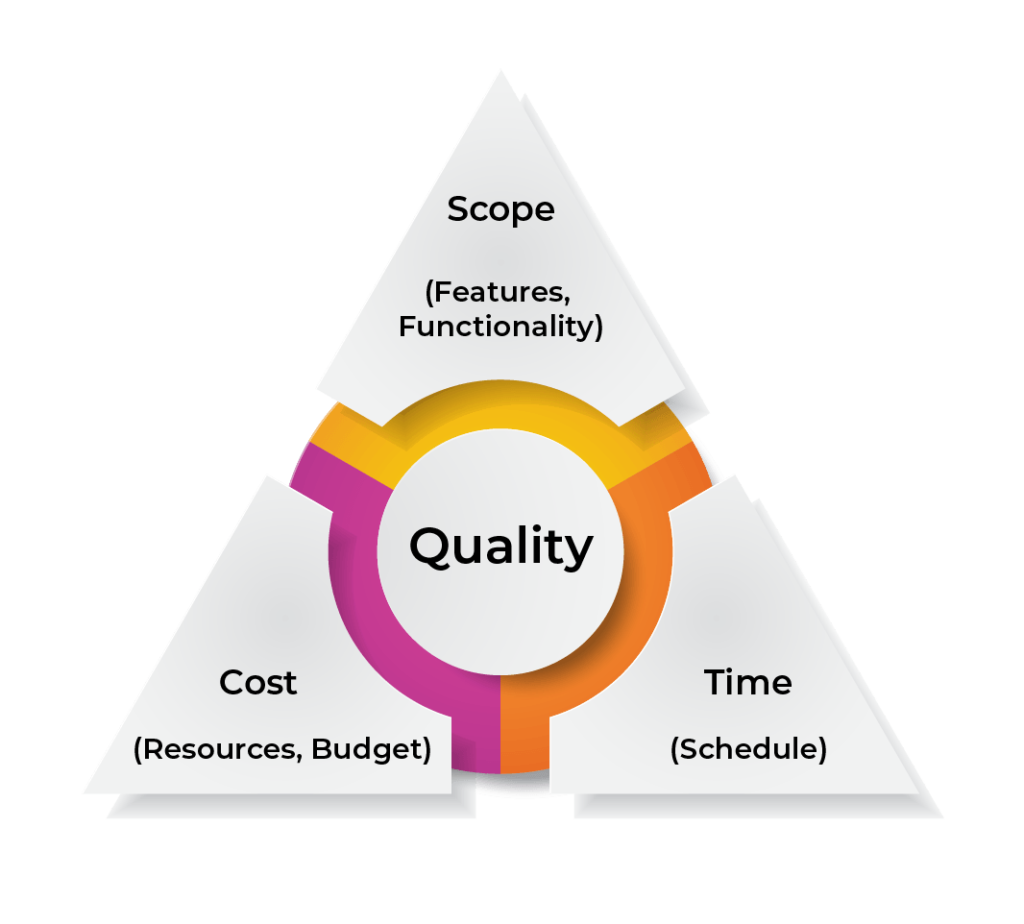Project Management Guide
Project Management Guide
What Is Project Management?
What Is a Project?
Why Is Project Management Important?
Project Life Cycle Phases
- Project Initiation
- Project Planning
- Project Execution
- Project Monitoring
- Project Closure
Project Management Methodologies
- Waterfall Project Management
- Critical Path Method
- Critical Chain Project Management
- Agile Project Management
- Scrum Project Management
- Kanban Project Management
- Lean Project Management
- Six Sigma Project Management
- PRINCE2
- PRiSM
- PMBOK Method
Project Management FAQ
What are Constraints in Project Management
In an ideal scenario, there would be no limitations to the things we wanted to do. But of course, it’s not a perfect world. All of us have to progress by navigating resources and restrictions in the best way that we can.
It’s exactly the same when it comes to project management. To successfully complete any project, project managers need to understand impediments and obstacles in their way. And then make plans to overcome them.
It’s this that makes project management both challenging and rewarding. After all, overcoming barriers successfully is what leads to a great sense of accomplishment.
Here, we’re going to specifically understand what constraints mean in project management, how they’re related to each other, and how to cope, control, and carry on.
In short, we’ll discuss:
- The Traditional Triple Constraints
- An Enhanced Model With Six Constraints
- How to Successfully Manage Constraints
By the end, you should have gained an understanding of what issues could hold you back from making your project a success, and how to deal with such constraints.
The Traditional Triple Constraints
For the longest time, project managers were told that there were three constraints to any project. These are:
- Scope
- Time
- Cost
The Project Management Institute’s Guide to the Project Management Body of Knowledge defines the above triple constraint as “a framework for evaluating competing demands.”
This is also sometimes referred to as “the iron triangle”. Any one of them can affect a project – and, importantly, if one of them changes, it has an effect on the rest, too.

For example, suppose the scope of a project suddenly expands, including quality issues. Clearly, the time needed as well as the costs can increase, too. Similarly, if budgets are cut, it’s easy to understand the effect this could have on time and scope.
As the old saying goes: you can’t have it good, fast and cheap. You have to pick any two.
It’s important to keep these three constraints in mind in order to successfully manage a project and deliver to everyone’s expectations.
This iron triangle concept was first developed in the world of manufacturing. Scope, time, and cost were intimately related to aspects of production and delivery. There were fixed budgets, timelines, and standards of quality.
In software and other digital projects, the triangle still applies, but with modifications. A good way to look at it is as a series of boundaries that define a project. You have to work within them to reach your goals.
Therefore, it’s best to have a clear idea of scope, time, and cost right from the start. These are the elements that should be baked into your project plan and discussed with all concerned.
An Enhanced Model With Six Constraints
Over time, the Project Management Institute came up with what they called an enhanced model for project control.
This identified six constraints for project managers to keep in mind. The first three are the same as those we’ve discussed above: time, scope, and cost.
To this, three more have been added:
- Quality
- Benefits
- Risks
Here, the constraint of quality is different from the scope in that while scope focuses on the specific deliverables, quality stands for their characteristics.
For example, the scope could refer to the number of pairs of shoes. And quality could refer to the specific type of leather used to make them.
This is a useful dimension to understand how exactly to go about creating a project deliverable. Further, it gives project managers some flexibility in substituting one process or raw material for another.
The constraint of benefits refers to the justification for and advantages of completing the project. It can be seen as the value the project brings to the organization.
This constraint enters the picture if such value drops below an acceptable level, or if the disadvantages of proceeding outweigh the advantages.
Finally, when it comes to risk, the impact on the overall project of such risks has to be carefully judged. The opportunities and threats have to be weighed and the decision taken to go ahead or not.
It helps in this six-constraint model to see the constraints not as fixed entities, but on a sliding scale. An experienced project manager will explore the upper and lower limits of these constraints and find the perfect path through them.
How to Successfully Manage Constraints
First of all, it’s important at the start of any project to form an understanding of the constraints involved. The scope, quality benchmarks, and timelines, for example, should be noted and discussed with clients and stakeholders.


Ideally, if the nature of the project permits, a form of sliding scale could be established, to find out what aspects fall within the acceptable range.
This is a way of working that asks the project manager to be proactive in handling constraints. If there are sudden changes during the course of a project, they have been anticipated and can be quickly acted on.
Decision-making thus becomes simpler. In addition, there is a level of transparency when it comes to handling the project, with no surprises at the last minute.
This also means evaluating options as well as coming up with fallback plans from the very beginning. A range of situations can be foreseen, along with the necessary actions to be taken if any of them arises.
Another advantage of this style of working is that communications are clear from the word go. All team members, as well as stakeholders, are clear about expectations, about the time that is needed, and about what their roles are.
Fortunately, there is a range of software and procedures to enable you to stay on top of these constraints – from scheduling to timesheets to methodologies such as Scrum, Agile, and Kanban.
Viewed in this way, project constraints aren’t aspects that hold you back. Rather, they are part of the process that you have to go through to close a project. Think of them as necessary steps to climb in order to get to the top.
